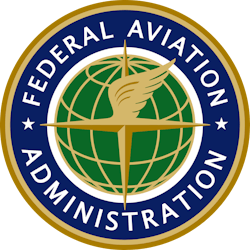FAA Rolls Out New Technology for Controllers to Improve Surface Safety at the Nation’s Airports
The Federal Aviation Administration (FAA) announced it is launching a new surface safety tool, called Approach Runway Verification (ARV), at air traffic control towers across the nation to improve safety at airports. Austin-Bergstrom International Airport is the latest tower to start using the safety technology this week.
“A safe National Airspace System begins and ends on the airport surface,” said FAA Administrator Mike Whitaker. “Providing controllers with tools such as Approach Runway Verification will improve their situational awareness of the airport surface, which is paramount to improving safety.”
ARV provides controllers with visual and audible alerts if an approaching aircraft is lined up to land on the wrong airport surface, or even the wrong airport.
ARV is currently installed at several air traffic control towers, including:
- Austin (AUS)
- Lincoln Tower (LNK)
- Elton Hensley (FTT)
- Lansing (LAN)
- DuPage (DPA)
- Chicago Executive (PWK)
- Tallahassee (TLH)
- Cedar Rapids (CID)
- Branson West Municipal (FWB)
- Gerald Ford International (GRR)
- Elkhart Municipal (EKM)
- South Bend (SBN)
- M. Graham Clark Downtown Airport (PLK)
The agency will deploy ARV at other facilities across the nation throughout the rest of the year and into 2025.
ARV works like this: when aircraft are approaching the airport, the controller issues a landing clearance to a specific runway. The pilot may believe they are aligned with the proper runway but could actually be lined up with an adjacent runway or even a taxiway. ARV will then alert the controller if the aircraft is not aligned with the runway surface as instructed.
ARV is one of the three surface situational awareness solutions that make up the FAA’s fast-tracked surface safety portfolio. The other tools are the Runway Incursion Device (RID) and the Surface Awareness Initiative (SAI). These technologies are agile, efficient and cost-effective.
RID is a memory aid for controllers and provides additional situational awareness of occupied or closed runways. RID provides an audible and visual alert to controllers when a runway is not available for departing or landing aircraft.
SAI leverages cost-effective, commercially available technologies that display surface traffic to controllers at airports that do not have a surface surveillance tool.
Quickly developing and deploying these technologies is just one of the many actions the FAA is taking to enhance safety and eliminate serious close calls following the Safety Call to Action and release of the Independent National Airspace System Safety Review Team report last year. The FAA has also taken action by:
- increasing air traffic controller hiring, surpassing our goal of hiring 1,500 new controllers in 2023, and hiring 1,800 in 2024.
- enhancing the Air Traffic-Collegiate Training Initiative to hire more candidates who can begin facility training immediately upon graduation.
- deploying upgraded tower simulator systems in 95 facilities across the country by the end of 2025.
- holding regular runway safety action team meetings at airports across the country.
- investing millions of dollars for runway lighting and surface improvements at large, medium and small airports.



